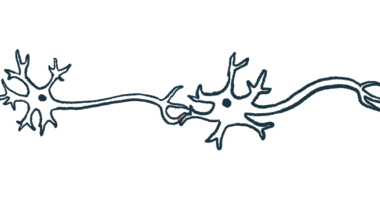Systemic Treatment May Be More Effective for SMA, Mouse Study Suggests

Restoring levels of the SMN protein exclusively in nerve cells through gene therapy only partly eased symptoms and lengthened survival in a mouse model of severe spinal muscular atrophy (SMA), a study from France found.
The gene therapy’s best results were observed when SMN levels were normalized systemically, or bodywide.
These findings support evidence suggesting that SMA is a multisystem disease, and further research to allow a better understanding of SMN protein requirements in various tissues to optimize disease treatments.
The study, “AAV9-Mediated Expression of SMN Restricted to Neurons Does Not Rescue the Spinal Muscular Atrophy Phenotype in Mice,” was published in the journal Molecular Therapy.
SMA is caused by mutations in the SMN1 gene, which result in no to low levels of SMN, a protein produced by virtually every cell in the body.
Motor neurons, the specialized nerve cells of the brain and spinal cord (central nervous system) that control voluntary muscle movement, are highly sensitive to SMN deficiency and die without it. The result is SMA’s hallmark symptoms: progressive muscle weakness and atrophy.
Given the profound neuromuscular symptoms seen in people with SMA, the disease has been considered specific to motor neurons.
In the last few years, however, an increasing number of studies have shown that other tissues and organs, such as skeletal muscle, the liver, heart, pancreas, and the vascular and immune systems are also affected by the disease.
Determining the extent to which SMN is required by tissues other than motor neurons, for this reason, may be highly relevant, both to better understand SMA’s underlying mechanisms and to develop effective therapies, the researchers wrote.
Currently approved SMA’s disease-modifying therapies — Biogen’s Spinraza and Novartis’ gene therapy Zolgensma — are mostly designed to target motor neurons. A main limitation in developing such therapies is the blood-brain barrier, a specialized membrane that prevents potentially harmful molecules in the blood from reaching the central nervous system (CNS).
Due to its inability to cross the blood-brain barrier, Spinraza is given directly into the fluid that bathes the CNS via intrathecal injection, which is thought to limit its effects in peripheral tissues. Zolgensma uses a modified and harmless adeno-associated virus (AAV) that can cross the blood-brain barrier — AAV9 — to deliver a healthy copy of the SMN1 gene to cells.
Although reported to specifically target motor neurons, Zolgensma is now approved as a one-time intravenous (directly into the bloodstream) treatment and as such may have systemic effects.
Whether the benefits seen so far with Zolgensma are exclusively due to CNS-specific actions or the combined effects on neural and other cell types “is still debated,”
To clarify whether targeting only the CNS is sufficient to treat SMA, a research team at Sorbonne University, in Paris, evaluated the therapeutic effects of restoring SMN levels exclusively in neurons and systemically in a mouse model of severe SMA.
The researchers assessed the survival, bodyweight, and neuromuscular function of mice treated with two distinct AAV9 therapies: one with a particular genetic sequence that drove the production of SMN only in neurons (AAV9-SYN), and the other with a sequence that promoted SMN production in every cell of the body (AAV9-PGK).
AAV9-SYN was administered through an intracerebroventricular (ICV) injection — directly into a specific region of the brain — while AAV9-PGK was given either intravenously or through an ICV injection.
In this way, the researchers were able to directly compare, for what they thought to be a first time, these two clinically relevant routes of gene therapy administration.
Either route of AAV9-PGK administration was found to effectively and similarly restore SMN levels in peripheral tissues (skeletal muscle, heart, and liver), while AAV9-SYN treatment resulted in no increase in SMN levels in these tissues.
Notably, ICV injection of AAV9-SYN was the only approach to effectively restore SMN levels in the CNS. Intravenous AAV9-PGK and AAV9-SYN treatment both lead to lower, similar SMN levels in the CNS.
Mice treated with AAV9-PGK, given via either route, lived significantly longer (a median of 142 to 221 days) than those treated with AAV9-SYN (a median of 39.5 days). This neuron-only treatment approach also only partly prevented weight loss and restored neuromuscular function in these mice.
Across all evaluations, ICV injection of AAV9-PGK resulted in the greatest therapeutic benefits. Since this was the only approach to normalize SMN levels bodywide, these findings highlight the importance of restoring SMN levels both in the CNS and in peripheral tissues, the team said.
“This study demonstrates the importance of appropriate peripheral targeting and suggests that optimal levels of SMN in each tissue should be defined to ensure a therapeutic effect of gene replacement strategies and, more generally, SMN-targeted approaches for SMA treatment,” the researchers wrote.
Since studies in animal models may only partly predict what happens in people, the team suggested that using patient-derived SMA organoids, combined with gene therapy, may provide more accurate information as to the contribution of SMN in different tissues.
The therapeutic effects of Zolgensma’s intrathecal administration (closer to an ICV injection) in SMA patients are being evaluated in a Phase 1/2 clinical trial, called STRONG (NCT03381729). The trial is currently on a partial hold due to reports of concerning side effects seen in a small preclinical animal study.
Risdiplam, by Roche, is an experimental oral therapy that works in ways similar to Spinraza but can cross the blood-brain barrier and also reach peripheral tissues via circulating blood. It is under regulatory review in several countries, including the U.S., where a decision on its approval is expected on or before Aug. 24.







